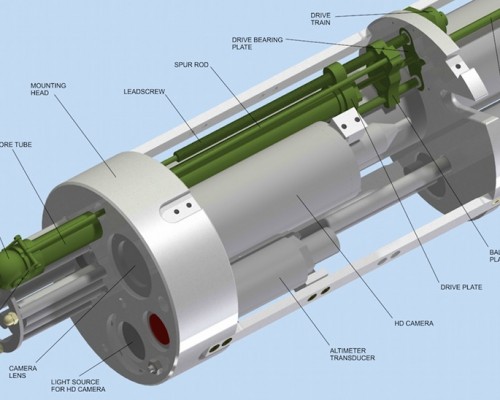Project Description
Lake Ellsworth is located at 78° 58′ 34″ S, 090° 31′ 04″ W in West Antarctica within the uppermost catchment of the Pine Island Glacier. It is located at the bottom of a deep, subglacial fjord-like trough approximately 3000-3250 metres below the ice surface. Interest in Antarctic subglacial lakes has seen the development of bespoke systems for sampling them. Considered pristine environments these systems are potentially harbouring undisturbed sedimentary sequences and ecosystems adapted to cold oligotrophic environments in the absence of sunlight. The water/sediment interface is considered a prime location for the detection of microbial life and so is of particular interest. Our paper published last year (2018) described a small corer designed to capture and retain a short core that includes the water/sediment interface specifically to address the question of whether life exists in these lakes.
In order to fulfil the scientific objectives of acquiring a sample that would be useful for this purpose while not affecting other sampling systems on what was a multi-parameter probe the corer had to conform to stringent criteria:
1) A design that enabled easy disinfection and the use materials resistant to these processes
2) Materials also had to be compatible with trace metal analysis (Fe in particular)
3) The system needed to be capable of preserving stratigraphic integrity even when capturing a low density, high porosity sample
4) The core capture mechanism needed to prevent the loss of material and pore water fractions
5) The corer needed to be driven by a mechanism that was capable of inserting the corer into a wide range of sediment shear strengths
6) Should the sample freeze something was required to compensates for a change in sample volume
7) There needed to be a reliable method for removing the sample on recovery that will not disturb it or contaminate it.
In addition to addressing the constraints of coring in this difficult environment, the results of subsequent testing suggest that this corer can be applied to sampling sediments in other environments and would be particularly useful in low energy environments when the water-sediment interface is indistinct or unconsolidated.
It’s Open Source so the full article can be read here: A mini‐corer for precision sampling of the water‐sediment interface in subglacial lakes and other remote aqueous environments

Drive Train close up



 3D Design Drawing
3D Design Drawing